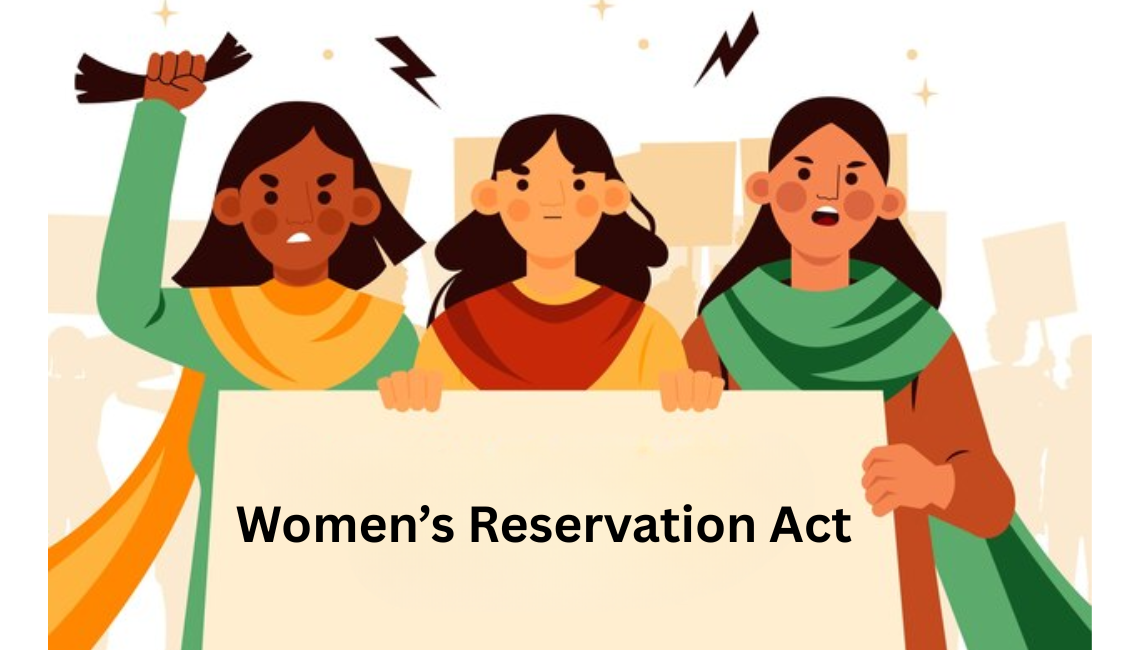The debate on whether the gender depiction in Indian politics is appropriate has been a plague since the country acquired the Constitution in 1950. Irrespective of constitutional provisions given in Articles 14, 15 and 16, which teach equality and prohibit disparities in gender, the facet of women forming the portion of weighing bodies has not been eminent. In a bid to address this structural imbalance, the Women Reservation Bill alternatively known as the Constitution 108th Amendment Bill endeavours to give women 33% of both Lok Sabha seats and all the state legislative assemblies. The Bill, presented in 1996 and debated numerous times in the Parliament, has undergone numerous political and social troubles, and its implementation is also a complex matter.
Historical Context
In India, there has been slow yet inadequate development in political participation of women. The landmark reforms were the 73rd and 74th Constitutional Amendments (1992) that required 33% of women representation in Panchayati Raj institutions and urban local bodies. These amendments showed how the reservation might result in even more women becoming politically engaged at the grassroot level. Indicatively, in states such as Rajasthan, Bihar and Kerala, there has been massive growth in the number of women who are in panchayat leadership roles. However, this has not been the case in state assemblies and the Parliament with women representation at only an average of 14% as of 2019 in the Lok Sabha.
Implementation Problems
The purpose of the Women Reservation Act is easy to understand, but its road to realization is fraught with a number of issues:
-
Political Resistance
Political resistance that comes in the form of the traditional parties is one of the biggest challenges. According to leaders, reservations have the potential to upset internal power arrangements and party hierarchies. The threat of losing seats to win to women candidates has been mentioned several times in the parliamentary discussions, a factor which has led to the delay in the enactment and implementation of the Bill.
-
Marginalized Groups Sub-Representation
The other difficulty is to make sure that there is intersectional representation. The Bill may be biased towards the women of the politically dominant communities, which may aggravate the current social inequalities unless the women beneficiaries are sub-quota grouped into Scheduled Castes (SC), Scheduled Tribes (ST), and other marginalized groups. This issue resonates with issues surrounding social justice and gender justice in the Indian polity that are the focus of the UPSC syllabus on governance and social justice.
-
Dynamics of Party Nomination and Leadership
Reservation does not ensure that women have a real influence even when they are nominated to the party. It is also a common practice to have women candidates in constituencies that are deemed safe or not that important. Furthermore, the existence of informal patriarchal framework of political parties can make them unsuccessful in becoming effective leaders, similar to the studies on the so-called phenomenon of proxy representation where male relatives tend to use power behind the scenes in Panchayati Raj institutions.
-
Socio-Cultural Constraints
There are also socio-cultural norms that are deeply rooted. Gender roles, family resistance, and paternalistic views about women in the society still dissuade women from challenging elections. In some areas, women who have been elected can also be harassed or marginalized, and thus they are not able to make significant contributions to legislation or policy-making.
-
Legal and Constitutional obstacles
The technical side of the implementation of the Bill itself is complicated. The Constitution (108th Amendment) must be ratified by no less than 50% of state legislatures to become a law. Litigate states that have low levels of women representation or are politically uninclined may delay or refuse to ratify, making it a period of uncertainty. Moreover, the balancing of the constituency delimitation, rotation of reserved seats and political negotiations creates more layers of complication.
The Way Forward
Capacity-building activities and social awareness campaigns can be used to assault deeply rooted patriarchal values. Legal remedies, like the Panchayati Raj model, are capable of averting a proxy representation and allowing women to have real power in the legislature. Lastly, the Bill will be inclusive and more socially fair when sub-quotas are given to the marginalized groups.
Conclusion
The Women Reservation Act can be a revolution in Indian democracy as it will promote inclusive democracy and empower women in the country. Its success, however, does not only depend on legal enactment but on political will, support of the society and structural changes in parties and institutions. To the aspiring candidates of the UPSC, it is important to appreciate the historical background, the constitutional aspects and the real-life limitations of the Act in order to come up with a historical analysis of gender, governance and social justice in India. It will not be a smooth ride ahead, but it can happen with a continued effort to make the vision of a gender-equitable representation in the Indian legislative institutions a reality.







